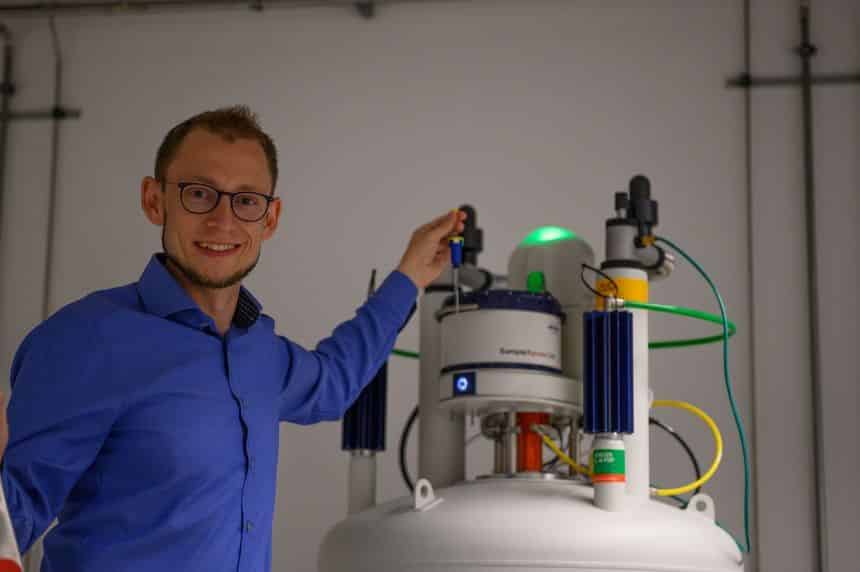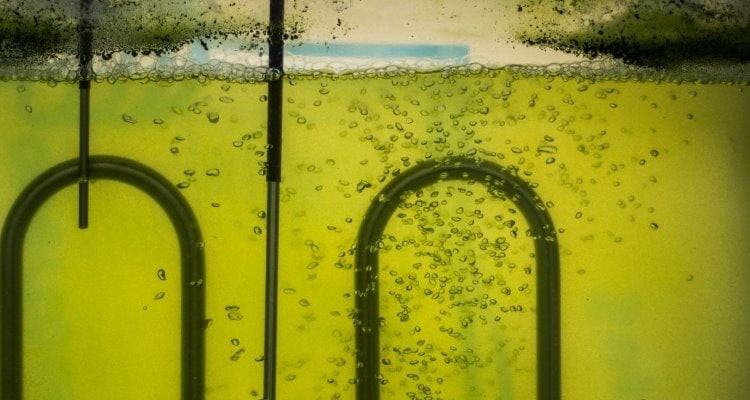
The sea is home to the most successful bacteria on our planet. Marine bacteria’s relevance in the global nutrient cycle is well documented. It is only its chemistry that had not yet been understood. An interdisciplinary team of researchers has now deciphered the degradation pathway of algae biomass. Using this knowledge, algae could soon become an important renewable biomaterial. Even the production of bioplastics should become possible.
Algae are multifarious plant organisms. Their photosynthesis makes them the most important source of oxygen in water and on the earth’s surface. However, they also cause damage as a result of an accelerated proliferation of algae bloom. Algae bloom is the term for the mass occurrence of algae. The problem is: degradation of algae requires oxygen. The more algae that start to degrade, the more oxygen is consumed which in turn endangers the life of all oxygen-dependent organisms in the water.
Following the example of nature
Science is looking for an industrial use for the ecosystem-hostile algae carpets that cause algae bloom. Christian Stanetty from the Institute of Applied Synthetic Chemistry at the Vienna University of Technology explains that the large molecules they produce are to be broken down into individual parts that can be used. The model for this complicated process is nature – specifically the natural metabolism of algae, which takes place via certain bacteria.
Stanetty is part of the transnational research project POMPU (Proteogenomics Of Marine Polysaccharide Utilization), where researchers want to develop algae as a renewable bioresource. What kept everyone from their goal was not understanding the chemistry of algae. Algae form the fundament of the marine ecosystem. They store more carbon than all terrestial plants. The carbohydrates of the algae are broken down by bacteria, making them an important source of energy for the entire marine food chain. That much is known. What exactly happens chemically during the degradation of algae biomass remained unknown until now.
Biochemical functions of enzymes
Polysaccharides (multiple sugars) from marine algae differ chemically from those of terrestrial plants. How algal polysaccharides are degraded by marine bacteria was for the most part not known until now. The researchers at the POMPU project have now succeeded in analyzing and understanding the complete degradation pathway of ulvan, the most important polysaccharide in algae. In an article published in the science journal Nature Chemical Biology, they described the metabolic route which leads to the biochemical workings of enzymes. There are a total of six different enzymes that break down polysaccharides into monosaccharides. In this way, the enzymes transform a previously unused biomaterial into a renewable and ecologically sustainable resource.
A biomaterial which can be used for fermentation, for the production of valuable types of sugar and, in the future, also for specialized bioplastics. The aim is for an environmentally friendly circular economy wherein renewable raw materials are used in as many ways as possible.
Unexpected chemical pathways
The researchers analyzed how the marine bacterium Formosa agariphila degrades the polysaccharide ulvan, which produces the ulva algae. A process Stanetty calls a minor chemical work of art: by using twelve different enzymes, the initial molecule is broken down step by step into ever smaller parts. The task of the TU Vienna was to clarify the exact appearance of these elements with the aid of nuclear magnetic resonance spectroscopy (NMR) and mass spectrometry. The results were surprising. Some of the constituents that set the decomposition process in motion looked different than expected, Stanetty explains. Quote: “This then showed us that the bacteria took different chemical paths to break down the polysaccharide.”
Toolbox for raw bioresources
The procedure showed the researchers:
- which enzymes the bacteria uses at what stage;
- how these microorganisms gain access to their food source;
At the same time, it enabled the creation of a toolbox with a series of new biocatalysts whereby the complex marine polysaccharide is able to be used specifically as a raw bioresource for fermentation, explains Professor Uwe Bornscheuer from the Ernst-Moritz-Arndt University in Greifswald, Austria.
Completely CO2 neutral
Professor Marko Mihovilovic from the TU Vienna emphasizes that the use of algae for the synthesis of hydrocarbons is completely CO2 neutral and he sees the success of the project as a step towards sustainable chemistry, which makes a genuine, ecologically practical circular economy possible.
His perspective is that synthesis makes it possible for the replacement of fossil raw materials. Even if they are rather simple products at first, such as special types of sugar. Quote: “But the better we understand the chemistry behind it, the better we will be able to use these algae as initial materials for complex syntheses, including bioplastics.”
Interdisciplinary collaboration
The scientist attributes the success of this complex research to the interdisciplinary collaboration between microbiologists, biotechnologists, biochemists and organic chemists. The project was led by Professor Thomas Schweder from the Ernst-Moritz-Arndt-Universität, Greifswald and Professor Rudolf Amann from the Max-Planck-Institute for Marine Microbiology, Bremen. Also involved are the TU Vienna, the Marum Research Facility, University of Bremen and the Roscoff Marine Station (France).
Publication:
Reisky, L./Préchoux, A./Zühlke, M.K./Bäumgen, M./Robb, C.S./Gerlach, N./Roret, T./Stanetty, C./Larocque, R./Michel, G./Song, T./Markert, S./Unfried, M./Mihovilovic, M.D./Trautwein-Schult, A./Becher, D./Schweder, T./Bornscheuer U.T./Hehemann, J.H. (2019): A marine bacterial enzymatic cascade degrades the algal polysaccharide ulvan. In: Nature Chemical Biology.







